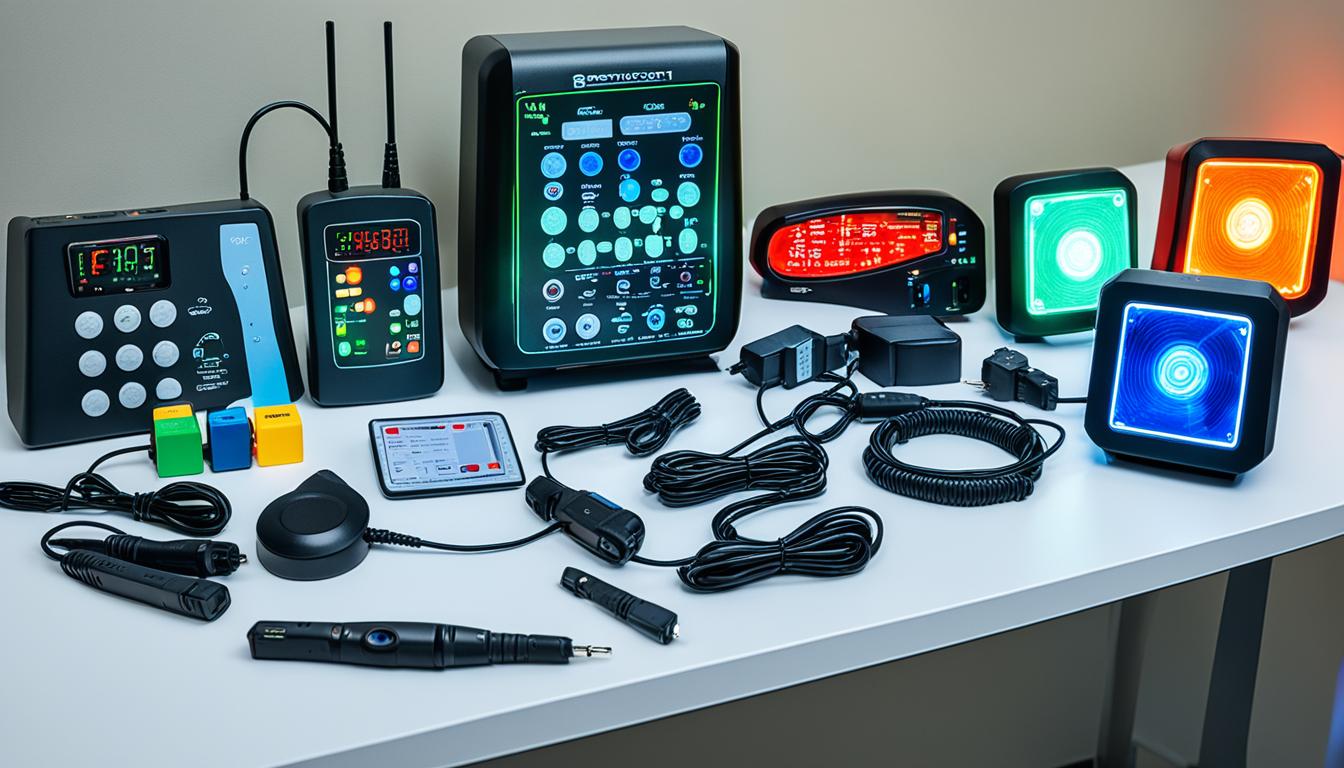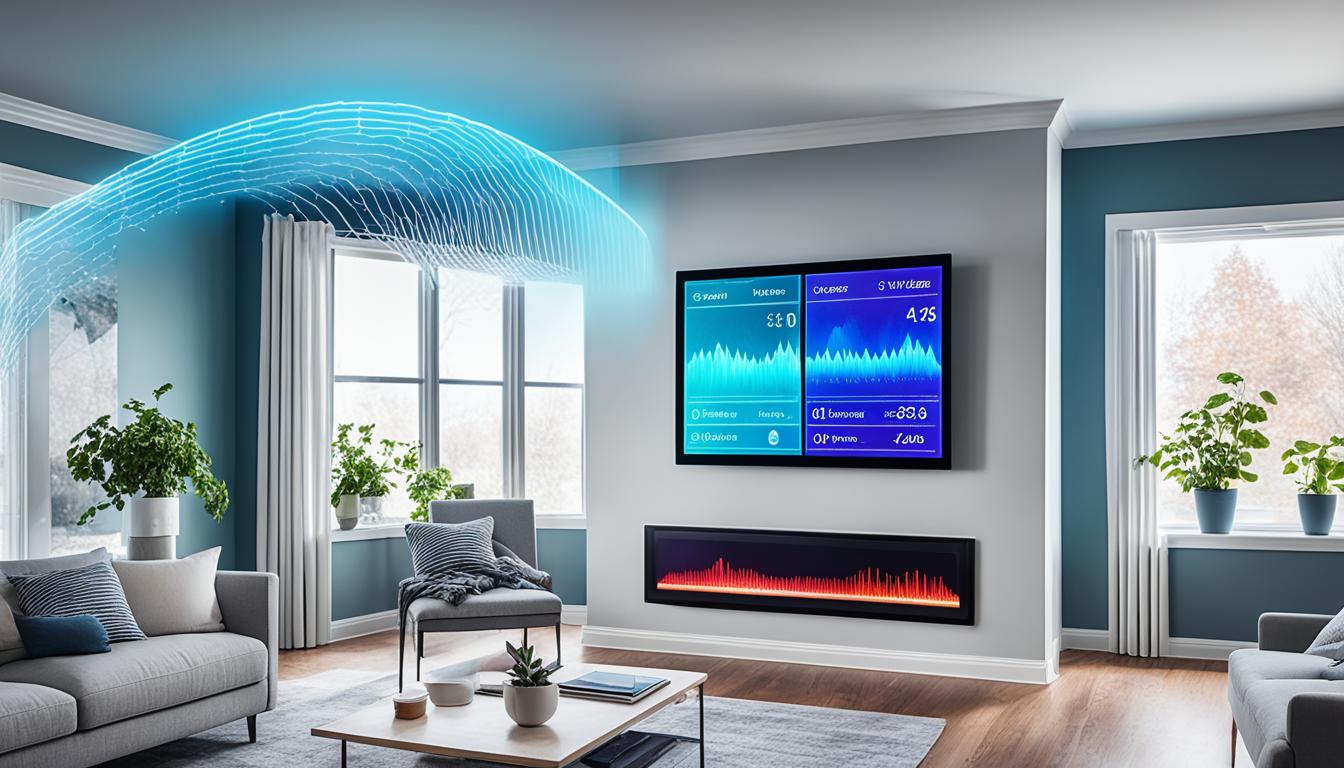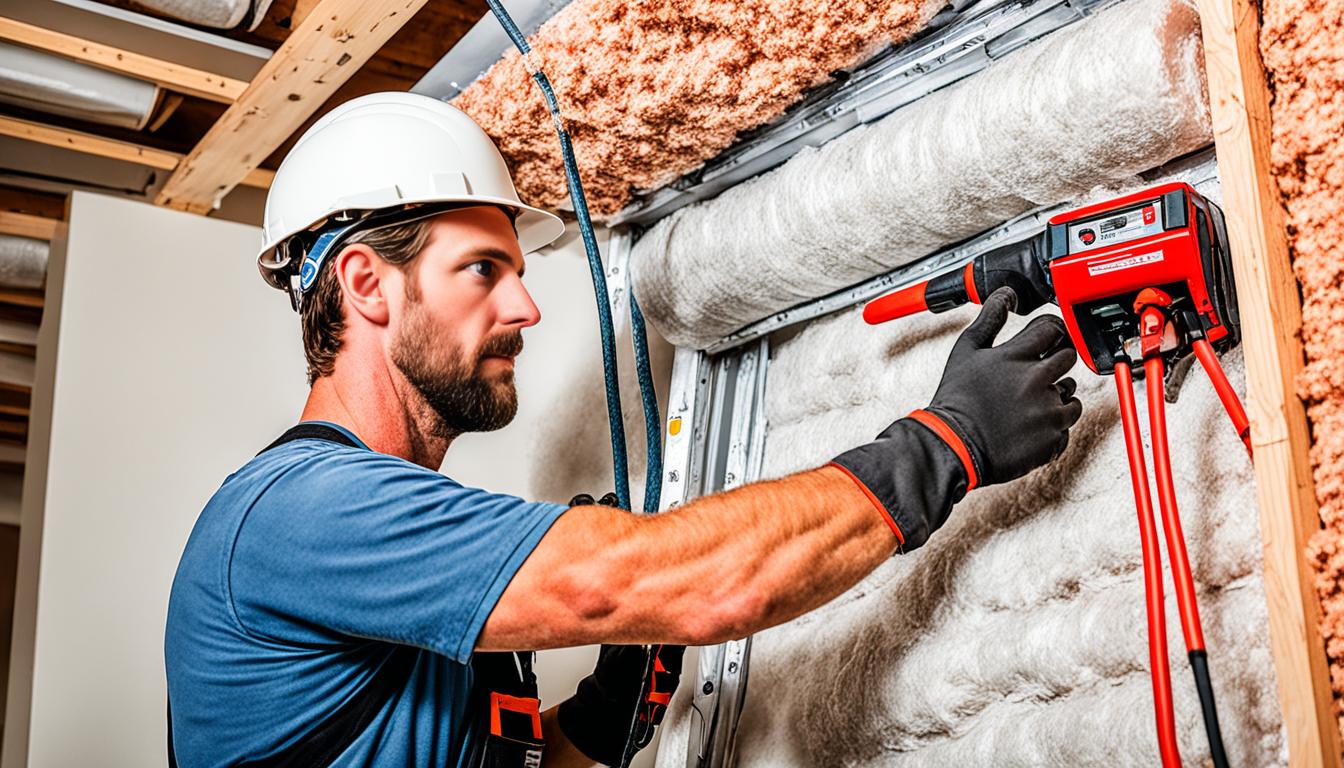Disclosure: This Post Contains Affiliate Links; We earn a commission on purchases.
Welcome to our guide on identifying common sources of electromagnetic field (EMF) radiation in your home. In today’s modern world, the number of electronic devices and appliances we use on a daily basis is staggering. While we may be aware of some common sources of EMF, such as cell phones and Wi-Fi routers, there are many more that often go unnoticed.
EMF sources can be found in devices like microwave ovens, computers, smart devices, breaker panels, solar inverters, and dimmer switches. Identifying these sources is crucial for minimizing our exposure to EMF radiation and creating a safer living environment for ourselves and our loved ones.
So, how can you identify these sources? Let’s explore some methods and tools that can help you in the process.
When it comes to identifying EMF sources at home, using EMF detection devices can be incredibly helpful. These devices are designed to measure and detect levels of EMF radiation emitted by various electronic devices. By using these tools, you can easily identify the sources of EMF radiation in your home and take appropriate measures to minimize your exposure.
Key Takeaways:
- EMF sources can be found in various electronic devices and appliances in our homes.
- Common sources of EMF include cell phones, Wi-Fi routers, computers, and smart devices.
- Other sources of EMF radiation include microwave ovens, breaker panels, solar inverters, and dimmer switches.
- Using EMF detection devices can help identify the sources of EMF radiation in your home.
- Minimizing exposure to EMF radiation is essential for creating a safer living environment.
Wi-Fi Routers: A Common EMF Source
Wi-Fi routers are one of the most common electronic devices found in households. They provide us with wireless internet connectivity, but they also emit significant amounts of EMF radiation, potentially exposing us to continuous emissions.
To minimize the health effects of Wi-Fi routers, there are several EMF exposure mitigation strategies and safety tips that you can follow:
- Turn off Wi-Fi routers when not in use, especially at night: This will significantly reduce the amount of EMF radiation emitted when you are not actively using the internet. Consider using a timer to automate this process and ensure that the router is turned off during the night.
- Keep the router away from bedrooms and frequently occupied areas: Positioning the router in a central area of the house, away from bedrooms and main living areas, can help minimize EMF exposure to individuals who spend extended periods in these locations.
- Consider using low-radiation routers: Some routers are designed to emit lower levels of EMF radiation compared to others. Look for routers that advertise low-radiation or low-EMF features.
- Hardwire devices instead of relying on Wi-Fi: Whenever possible, consider connecting your devices directly to the router using Ethernet cables. This eliminates the need for wireless connections and reduces EMF exposure.
By implementing these EMF safety tips and taking steps to mitigate exposure, you can reduce the potential risks associated with Wi-Fi router radiation and create a safer living environment for yourself and your family.
Did You Know?
According to the World Health Organization, exposure to high levels of EMF radiation can cause health issues such as electromagnetic hypersensitivity and may contribute to the development of certain types of cancer. It’s important to take proactive measures to minimize EMF exposure in your daily life.
EMF Shielding Products: Enhancing Protection
If you are particularly concerned about EMF exposure from Wi-Fi routers or other electronic devices, you may consider using EMF shielding products. These products are designed to reduce the amount of EMF radiation that penetrates through walls, floors, or other surfaces.
EMF shielding products usually come in the form of paints, fabrics, or specially designed wallpapers that contain materials capable of blocking or absorbing EMF radiation. When applied or installed correctly, these products can provide an additional layer of protection against EMF exposure.
Keep in mind that while EMF shielding products can be effective in reducing EMF radiation, they should not be viewed as a standalone solution. It’s still important to follow other EMF safety tips to further mitigate exposure and create a comprehensive approach to EMF protection.
Cell Phones: Everyday EMF Sources
Cell phones have become an integral part of our lives, but it’s important to be aware that they also emit substantial amounts of EMF radiation. While avoiding cell phone usage entirely may be unrealistic for most people, there are precautions we can take to minimize our exposure to EMF radiation.
Practical Steps to Reduce EMF Radiation
To reduce EMF radiation from cell phones, here are some practical steps you can take:
- Avoid sleeping with your phone. Keeping your phone away from your body during sleep helps reduce prolonged exposure to EMF radiation.
- Keep your phone away from your body as much as possible. Avoid carrying it in your pockets or holding it close to your body for extended periods.
- Use the speakerphone feature or wired headphones while taking calls. This helps reduce direct contact of the phone with your head.
- Avoid using your cell phone in low network areas. When the signal is weak, cell phones tend to emit more radiation to maintain connectivity.
- Keep your phone in flight mode when possible, especially when not in use. This mode disables all wireless connections, significantly reducing EMF radiation.
Incorporating these simple practices into your daily routine can go a long way in reducing your exposure to EMF radiation without sacrificing the use of your cell phone.
If you’d like to learn more about reducing EMF radiation at home, take a look at the table below for information on EMF levels in common household appliances:
| Household Appliance | EMF Level |
|---|---|
| Microwave Oven | High |
| Computer | Medium |
| Television | Low |
Smart Devices: Adding to EMF Pollution
The growing number of smart devices in our homes contributes significantly to the overall EMF pollution. While these devices offer convenience and connectivity, it’s important to be aware of the potential health risks associated with prolonged exposure to EMF radiation.
Before purchasing new smart devices, it is essential to consider if we truly need them. Assessing their functionality, benefits, and potential drawbacks can help make informed decisions. By avoiding unnecessary smart devices, we can reduce overall EMF exposure in our homes.
One effective way to mitigate EMF exposure from smart devices is by hardwiring them instead of relying on Wi-Fi connections. Hardwiring not only ensures a more stable and secure connection but also minimizes the amount of EMF radiation emitted. Choosing ethernet adapters for smart devices like the Amazon Fire TV Stick allows for a wired, low-EMF connection.
Furthermore, turning off smart devices when not in use can significantly reduce EMF emissions. By powering down devices such as smart speakers, smart TVs, and voice assistants, we can minimize their impact on our EMF environment.

Remember, it’s crucial to strike a balance between the benefits of smart devices and the potential health risks they pose. By making conscious choices and implementing mitigation strategies, such as hardwiring and powering off devices, we can decrease our exposure to EMF radiation and create a safer living environment.
Microwaves and Computers: EMF Emissions
Household appliances like microwaves and computers are common sources of EMF radiation. Understanding the EMF levels in these devices and taking appropriate precautions can help minimize exposure and promote a healthier living environment.
Microwaves: High Power EMF Radiation
Microwaves emit microwave EMF radiation at high power levels to cook food efficiently. While they have become a staple in many kitchens, it is advisable to consider alternative cooking methods whenever possible. Stoves or toaster ovens can be used as safer alternatives that emit lower levels of EMF radiation.
Additionally, if you frequently use a microwave oven, it is recommended to have it serviced annually to ensure optimal functionality and safety. When using a microwave, it is important to stay far away from it while it’s in use to minimize exposure to EMF radiation.
Computers: Extensive EMF Radiation
Computers, including laptops and desktops, produce extensive amounts of EMF radiation due to the internal components and wireless connectivity. To reduce EMF exposure when using computers:
- Avoid using laptops directly on your lap for extended periods. Instead, place them on a desk or use a laptop cooling pad.
- Consider hardwiring your computer to the internet instead of relying solely on Wi-Fi. This can help reduce EMF emissions.
- Take breaks from prolonged computer use to give your body and eyes a rest.
By implementing these measures, you can minimize the potential health risks associated with EMF radiation from microwaves and computers.

| Appliance | EMF Radiation Level |
|---|---|
| Microwave | High |
| Stove or Toaster Oven | Low |
| Computer | Extensive |
| Laptop Cooling Pad | Negligible |
Conclusion
In conclusion, by taking proactive steps to identify and mitigate common sources of EMF radiation in our homes, we can create a healthier and safer living environment for ourselves and our loved ones. One of the key measures is to turn off Wi-Fi routers when not in use and keep them away from frequently occupied areas, especially bedrooms. By reducing exposure to Wi-Fi radiation, we can significantly minimize EMF exposure.
When it comes to cell phones, it is important to practice safe usage habits. Keeping the phone away from the body, using wired headphones or the speakerphone feature, and avoiding low network areas can help reduce the amount of EMF radiation we are exposed to on a daily basis.
Additionally, carefully considering the necessity of smart devices and using ethernet adapters or hardwiring them instead of relying solely on Wi-Fi can further mitigate EMF exposure. It is also important to be mindful of our use of microwaves and computers, opting for alternate cooking methods whenever possible and avoiding direct contact with laptops on our laps.
By staying informed and making educated choices, we can actively reduce our EMF exposure, promoting better overall health and well-being. Remember, EMF safety is a collective effort, and adopting these simple yet effective measures can go a long way in creating a safer and more environment-friendly home.
Source Links
- https://www.healthandenvironment.org/docs/xaruploads/EMFSourcesAndChoices.pdf
- https://waveguard.com/en/8-most-common-sources-of-emfs-in-your-home/
- https://www.shieldyourbody.com/10-sources-of-emf-radiation/

Subscribe to Our Newsletter










